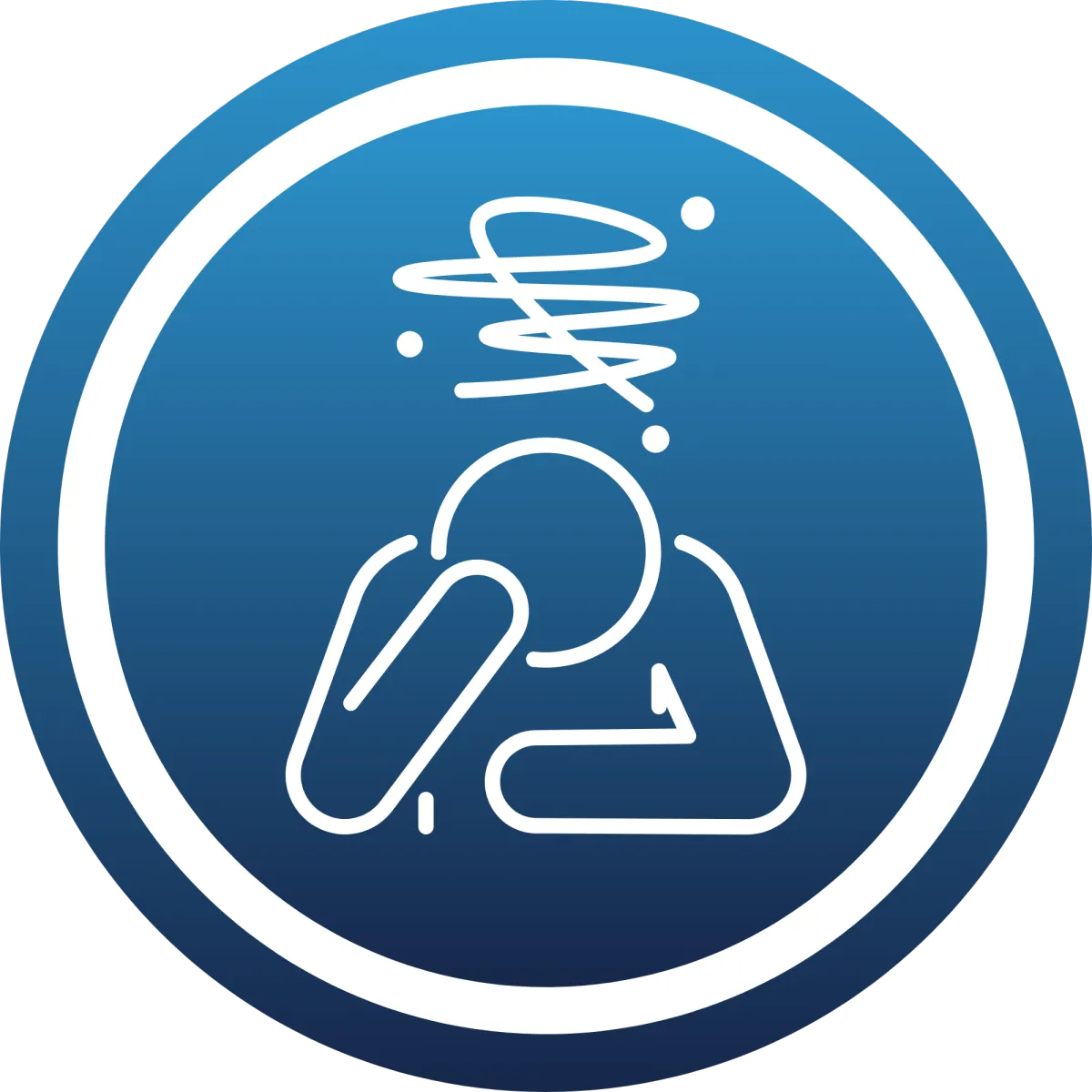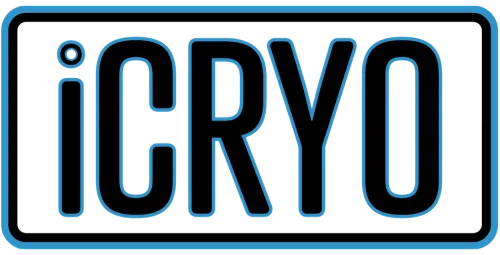HYPERBARIC
OXYGEN THERAPY
Hyperbaric Oxygen Therapy (HBOT) involves the medical use of oxygen in a pressurized environment exceeding 1 atmosphere absolute (ATA). The increased pressure enables oxygen to dissolve directly into the blood plasma, bypassing the reliance on hemoglobin or red blood cells. This process delivers elevated oxygen levels throughout the body, producing a wide range of positive physiological, biochemical, and cellular effects. As a noninvasive treatment, HBOT is widely regarded as the most effective method for enhancing oxygen delivery to all organs.
Each session typically lasts 60 to 90 minutes, during which patients lie down and breathe normally. Clinical studies have shown that HBOT supports the body’s natural ability to repair and regenerate, making it a valuable adjunct therapy for promoting healing in both acute and chronic conditions.
Best Uses For Mild Hyperbaric
Oxygen Therapy

ENHANCED RECOVERY
Speeds up the healing of injuries, wounds, and post-surgical recovery by improving oxygen delivery to tissues, promoting tissue repair and reducing inflammation.

IMPROVE CIRCULATION
Enhances blood flow and oxygen delivery throughout the body, supporting overall circulatory health.

ANTI-AGING
Supports cellular regeneration and may help slow down the aging process by promoting the repair of damaged cells and tissues.

CHRONIC CONDITIONS
Can be helpful for managing conditions like fibromyalgia, migraines, asthma, and other chronic health issues by improving oxygenation and reducing symptoms.

IMPROVE SKIN HEALTH
Promotes collagen production, which can improve skin tone, texture, and elasticity, leading to healthier, younger-looking skin.

REDUCE INFLAMMATION
Helps reduce inflammation in the body, which can be beneficial for conditions like arthritis, chronic pain, and muscle soreness.

INCREASE ENERGY & VITALITY
Boosts overall energy levels and helps combat fatigue, making you feel more energized and refreshed
.

MENTAL CLARITY & FOCUS
Helps clear brain fog and improves cognitive function by enhancing oxygen supply to the brain, promoting better focus and memory.

STRESS MANAGEMENT & ANXIETY RELIEF
May help lower stress levels and anxiety by promoting relaxation and reducing the physical effects of stress.

BOOST IMMUNE FUNCTION
Enhances the body’s ability to fight infections by supporting the immune system and improving the function of white blood cells.
Still have questions about Hyperbaric Oxygen Therapy? Stop by—we’re happy to walk you through it.
Schedule a Consultation

After my surgery, I began mHBOT, and it completely transformed my recovery process. The sessions significantly reduced my swelling and pain, allowing me to heal much faster than I anticipated. Even my doctor was amazed at how quickly my incision site healed and how minimal the scarring turned out to be.
-Jodi P.
Henry's Law

P/Kh = C
C = kH x P
C: Concentration of the gas in the liquid (solubility).
kH: Henry's Law constant, which depends on the specific gas, the solvent, and the temperature.
P: Partial pressure of the gas above the liquid.
The law states...
At a constant temperature, the amount of a given gas that dissolves in a given type and volume of liquid is directly proportional to the partial pressure of that gas in equilibrium with that liquid
In a hyperbaric chamber...
Pressure is essential for a gas, like oxygen, to dissolve effectively into a liquid, such as blood plasma. In a hyperbaric environment, elevated pressure enables higher levels of oxygen to penetrate deeply into the body’s tissues.
Boyle's Law

C = P x V
C: Constant
P: Pressure
V: Volume
The law states...
When the temperature and quantity of gas remain constant, an increase in pressure results in a decrease in volume, and vice versa.
In a hyperbaric chamber...
As pressure increases, oxygen molecules are compressed into a denser environment. This higher concentration of oxygen in the alveoli (lung membrane) enhances the diffusion of oxygen into the bloodstream, allowing more oxygen to saturate the blood plasma.
Boyle's Law

V1/T1 = V2/T2
V1: Volume of gas
T1: Temperature of gas
V2: Volume of gas
T2: Temperature of gas
The law states...
The volume of a gas is directly proportional to its temperature, provided the pressure and amount of gas remain constant. As the temperature of a gas increases, its volume increases, and as the temperature decreases, its volume decreases.
In a hyperbaric chamber...
Inside a hyperbaric chamber, as pressure increases, the temperature also rises. This temperature increase directly affects the volume of gases, expanding the available oxygen and enhancing its accessibility.

I was skeptical at first, but mHBOT has really made a difference. It’s helped with my focus, and I feel younger and more energized overall. My stress and anxiety are way more manageable now too. The sessions are simple, and I walk out feeling better every time. Definitely worth it!
-Darryl T.
What A Typical Session Looks Like
A typical Mild Hyperbaric Oxygen Therapy (mHBOT) session is straightforward, relaxing, and lasts around 60 minutes under pressure. Here’s what it looks like:
Arrival and Preparation: You'll check in and be guided to the hyperbaric chamber. Wear comfortable clothing or we can provide some for you (no special attire is required). If desired, we will provide optional relaxation items like blankets or pillows.
Entering the Chamber: You’ll step into a soft-sided chamber that’s spacious enough to lay or recline comfortably. The staff will explain the process, ensure you’re comfortable, and seal the chamber.
Pressurization Phase: The chamber gradually pressurizes to 1.3 times the normal atmospheric pressure. You might feel a slight popping in your ears, similar to flying in an airplane.

Breathing Oxygen-Rich Air: During the session, you’ll breathe naturally. The oxygen in the chamber is compressed, allowing it to be absorbed by both your red blood cells and your blood plasma. This helps increase oxygen levels in your bloodstream and tissues. You can relax, take a nap, or even read a book during the session.
Decompression Phase: Near the end of the session, the chamber slowly returns to normal atmospheric pressure. You may notice a gentle popping in your ears again.
Post-Session: After the session, you’ll step out of the chamber feeling relaxed and refreshed. There’s no downtime, so you can immediately return to your normal activities.
For optimal results, it's generally recommended to schedule hyperbaric sessions as closely together as possible. After a certain number of sessions, a mandatory rest period is required.
TESTIMONIALS
SKIN HEALTH
"I struggled with dry, saggy skin for years, no matter how many creams or serums I tried. After starting red light therapy, hydrating IV treatments and cryo facials, my skin became noticeably brighter, smoother, and more vibrant. Friends even started asking what I was doing differently! I feel great about myself, sleep better and have so much more energy throughout the day."
-Nicole R.

LOW ENERGY
"I started coming because I was always tired, stressed, and dealing with constant aches. After just a few sessions of cryotherapy and red light therapy, I started noticing a huge difference. My energy came back, my sleep improved, and I finally started to feel like myself again. The team created a plan that fit my goals, and now I feel stronger, happier, and more confident."
-Sarah G.

WEIGHT LOSS
"I’m 55, and losing weight had become so frustrating. I started GLP-1's after hearing good things, and it ended up being exactly what I needed. The weight started coming off, and for the first time in a long time, I felt hopeful. Once I got down to my ideal weight, I did a series of Neveskin sessions that helped tighten some of my loose areas. It was the perfect finishing touch. Now I feel more confident in my clothes — and more like myself again."
-Regina M.

NAD+
"I didn’t realize how much I’d been running on empty until I tried NAD+. I was dealing with low energy, brain fog, and just felt off. After a few sessions, I started feeling sharper, more focused, and like I had my edge back. It’s become part of my routine now, and I can honestly say I feel better at 50 than I did at 40."
-Bradley D.

EMSCULPT NEO
"Thank you iCRYO. I did five sessions of the Emsculpt Neo (they had the best pricing) after struggling to rebuild my core strength post-pregnancy. No matter how much I worked out, I just couldn’t get my stomach to tighten up. After the treatments, I started to make some progress. My abs felt stronger, my waist looked flatter, and my clothes started to fit better. My gym workouts got way better too.

TESTIMONIALS
SKIN HEALTH
"I struggled with dry, saggy skin for years, no matter how many creams or serums I tried. After starting red light therapy, hydrating IV treatments and cryo facials, my skin became noticeably brighter, smoother, and more vibrant. Friends even started asking what I was doing differently! I feel great about myself, sleep better and have so much more energy throughout the day."
-Nicole R.

LOW ENERGY
"I started coming because I was always tired, stressed, and dealing with constant aches. After just a few sessions of cryotherapy and red light therapy, I started noticing a huge difference. My energy came back, my sleep improved, and I finally started to feel like myself again. The team created a plan that fit my goals, and now I feel stronger, happier, and more confident."
-Sarah G.

WEIGHT LOSS
"I’m 55, and losing weight had become so frustrating. I started GLP-1's after hearing good things, and it ended up being exactly what I needed. The weight started coming off, and for the first time in a long time, I felt hopeful. Once I got down to my ideal weight, I did a series of Neveskin sessions that helped tighten some of my loose areas. It was the perfect finishing touch. Now I feel more confident in my clothes — and more like myself again."
-Regina M.

NAD+
"I didn’t realize how much I’d been running on empty until I tried NAD+. I was dealing with low energy, brain fog, and just felt off. After a few sessions, I started feeling sharper, more focused, and like I had my edge back. It’s become part of my routine now, and I can honestly say I feel better at 50 than I did at 40."
-Bradley D.

EMSCULPT NEO
"Thank you iCRYO. I did five sessions of the Emsculpt Neo (they had the best pricing) after struggling to rebuild my core strength post-pregnancy. No matter how much I worked out, I just couldn’t get my stomach to tighten up. After the treatments, I started to make some progress. My abs felt stronger, my waist looked flatter, and my clothes started to fit better. My gym workouts got way better too.
-Erin L.

Your Wellness Destination in
Chandler, AZ
At iCRYO Chandler, we combine cutting edge wellness technology with personalized care to help you feel stronger, healthier, and more confident in your body while effectively managing pain. Every service is backed by science and designed to deliver real results. Book your appointment today and discover what’s possible when wellness meets innovation.
Wellness

CONTACT US
2510 W Chandler Blvd, Suite 5
Chandler, AZ 85224
BUSINESS HOURS
Mon - Fri 8:00am -7:00pm
Sat - 9:00am - 4:00pm
Sun - 9:00am - 3:00pm
2025 | Chandler Wellness & Recovery. All rights reserved.




